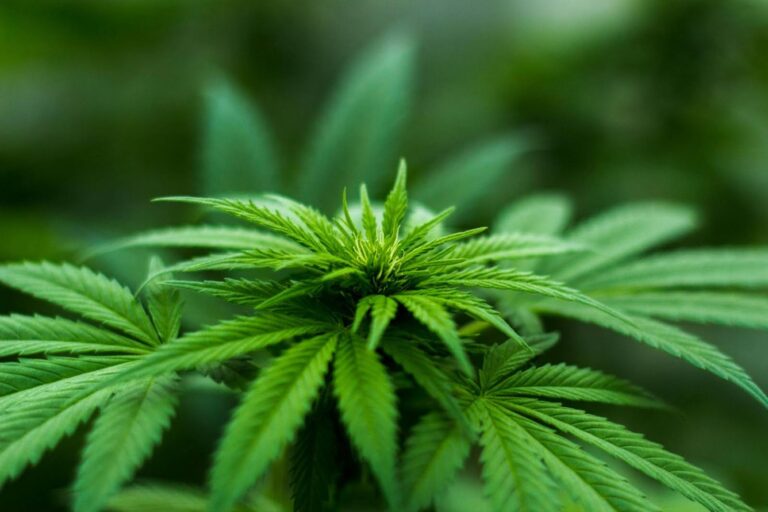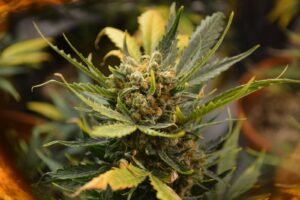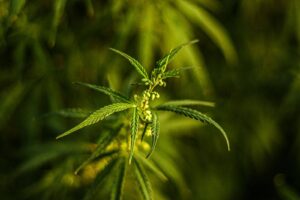Are your cannabis seeds refusing to sprout no matter how carefully you plant them? Germination is one of the trickiest parts of growing cannabis, and it often feels like there’s no clear reason why some seeds take off while others stay stubbornly still. You might have checked soil, water, and light, but if you overlook temperature, you could undo all your hard work..
Temperature plays a huge role in waking seeds from dormancy. It acts as a signal, telling your seeds that it’s safe to begin growing. If the temperature isn’t right, your seeds may stay inactive or only germinate partially, resulting in weak, underdeveloped sprouts. Getting the cannabis seed germination temperature right is the difference between a thriving grow and a frustrating start that leaves you guessing.
The good news is that you can absolutely control this. Once you dial in the temperature, you’ll see a major difference in how reliably your seeds pop.
Let’s walk through what you actually need to know to make those seeds pop reliably every time.
Ideal Temperature Range For Germinating Cannabis Seeds
To give your cannabis seeds the best possible start, you want to maintain a temperature between 70 and 85°F (21 to 29°C). This warm environment mimics the natural conditions seeds would encounter during spring, signalling that it’s time to wake up and grow. Staying within this range encourages rapid and reliable germination.
Why is this range important? Here’s what it supports:
- Optimal enzyme activity: Seeds rely on enzymes to break down stored food and kickstart growth. Enzymes function most efficiently within this temperature window, speeding up metabolic processes and encouraging quick development.
- Efficient water absorption: Warmth softens the seed shell and helps it draw in moisture, which is critical for initiating germination. If the shell remains hard and dry, water can’t penetrate, and growth is stalled.
- Faster sprouting: Seeds in the right temperature range often grow within a few days, reducing the risk of mold or rot from prolonged moisture exposure.
- Reduced seedling stress: When the temperature stays within this optimal range, seedlings emerge stronger and more stable, facing less environmental stress as they grow.
- Improved germination rate: Seeds kept in the correct temperature zone are more likely to germinate successfully and evenly, giving you a more uniform and manageable crop from the start.
Strain-specific temperature preferences
While the 70 to 85°F range is your baseline, different cannabis strains may show slight preferences:
- Tropical sativas: These often thrive near the upper end, enjoying temperatures closer to 85°F (29°C).
- Indicas and hybrids: Many of these tolerate or even prefer the lower end of the spectrum, around 70 to 75°F (21 to 24°C).
- Auto-flowering varieties: These strains tend to be more adaptable but still benefit from the mid-range temperatures of 75 to 80°F (24 to 27°C).
- High-CBD strains: Some medicinal strains have more precise environmental preferences—checking breeder recommendations can help fine-tune conditions.
If you’re unsure about your strain, aim for the mid-70s as a safe starting point. Now, let us understand how to maintain consistency in temperature for proper cannabis seed germination.
How to Keep Consistency in Temperature
Your seeds need consistency to thrive. Sudden drops or spikes in temperature can confuse the seeds, interrupt cellular activity, or even halt the germination process completely. A steady, controlled environment ensures your seeds develop evenly and without unnecessary stress.
Here’s how to stay consistent:
- Use a reliable heat source: A germination mat is one of the most effective tools available. It provides gentle, even warmth that mimics natural conditions. Place it underneath your seed tray or paper towel setup to create a cozy and consistent micro environment.
- Avoid heat from fluctuating sources: Radiators, sunny windowsills, or space heaters can cause unpredictable temperature swings. These ups and downs can shock your seeds and slow down or derail progress.
- Insulate your setup: If you’re germinating seeds in a cool or drafty area, adding a layer of insulation, such as a towel, foam board, or bubble wrap, can help stabilize temperatures and reduce heat loss.
- Use a thermometer: Even if the room feels warm, the spot where your seeds are might not be. Monitor the exact temperature at the seed level to ensure you stay within the optimal range. Tools like PlanaCan support this precision. It generates detailed reports for each harvest, capturing data on every cultivation decision and its impact on yield. With everything in one place, it’s easier to spot patterns, refine methods, and avoid repeating mistakes. This leads to better harvests and higher profitability.
So, how do you avoid extreme temperatures? Let us understand this in detail below.
Avoiding Extreme Temperatures
This is one of the most common places growers mess up. It’s easy to focus so much on keeping things warm that you accidentally push your setup into dangerous territory.
Too Hot
- Seeds dry out or cook: If your temperature climbs above 90 degrees Fahrenheit (32 degrees Celsius), the moisture in your germination medium can evaporate quickly. That leaves your seeds dry and lifeless before they even have a chance.
- Bacteria and mold thrive: Excessive heat also creates a breeding ground for harmful microbes. Instead of germinating, your seeds might rot.
- Stunted growth: Even if a seed does manage to sprout in high heat, the stress often results in slow, weak development.
- Nutrient uptake issues: High heat can interfere with root development, making it harder for the seedling to absorb nutrients effectively once it sprouts.
- Increased risk of damping-off: Elevated temperatures and excess moisture can lead to damping-off, a fungal disease that kills seedlings shortly after they emerge.
Too Cold
- Dormancy continues: If temperatures dip below 60 degrees Fahrenheit (15 degrees Celsius), your seeds may interpret that as winter and stay dormant.
- Delayed sprouting: Cold conditions slow down cellular activity, which can extend germination from a few days to well over a week or longer.
- Uneven germination: Some seeds might try to sprout while others stay asleep, leaving you with an inconsistent batch.
- Increased risk of mold: Prolonged germination times in cooler conditions mean your seeds sit in moisture longer, increasing the chance of mold or rot.
- Lower overall germination rates: Seeds exposed to extended cold may fail to germinate, reducing overall yield.
So, how does the use of a germination mat and other heat sources help in the proper germination of cannabis seeds? Let us find out in detail below.
Use of Germination Mat and Heat Sources
When germinating cannabis seeds, creating the right environment is crucial for successful sprouting. A germination mat and the right heat source can help you achieve optimal conditions for seed development. Here’s how you can effectively use them.
Why Use a Germination Mat?
A germination mat provides consistent, gentle heat that helps maintain an ideal temperature range for seed germination (typically 70-90°F or 21-32°C). This warmth speeds up the process and ensures more reliable sprouting.
- Stable Temperature: Germination mats deliver uniform heat, preventing temperature fluctuations that can stress the seeds.
- Faster Germination: With the right warmth, seeds break through the surface quicker, promoting healthier seedlings.
How to Use a Germination Mat
- Place the Mat in a Warm Location: Position it somewhere protected from drafts, direct sunlight, or extreme temperature swings. A closet or grow tent works well.
- Use a Waterproof Tray or Surface: Always place your seed containers or paper towel setup on a waterproof tray on top of the mat. This prevents moisture from damaging the mat or electrical components.
- Set the Temperature: Set the mat to maintain a steady 70–90°F (21–32°C). Most growers aim for around 78°F (25–26°C) as the sweet spot for cannabis seeds.
- Cover the Seeds: Use a humidity dome or loosely cover your seed containers to retain warmth and moisture. This creates a mini greenhouse effect.
- Monitor Moisture Levels: Check moisture levels regularly. Mist the medium lightly if it feels dry. Overwatering can suffocate seeds or cause mold. As you dial in these early steps, PlanaCan makes it easy to track your decisions and see how they affect your yield. With everything in one place, you can spot patterns, build on what works, and avoid repeating mistakes. This helps you refine your process and improve profitability.
- Monitor Seedlings: Check your seeds daily. As soon as taproots appear, or cotyledons begin to break the surface, move them to your growing medium under appropriate light.
- Turn Off the Mat After Germination: Once all seeds have sprouted and are stable in their medium, you can turn off the mat to avoid overheating the root zone.
Now, let us understand how to manage overnight and environmental conditions to ensure proper germination of cannabis seeds.
Managing Overnight and Environmental Conditions
To ensure successful cannabis seed germination, you must create an environment that promotes optimal growth. Here’s how you can manage the conditions effectively:
- Maintain Optimal Temperature: Cannabis seeds thrive in a warm environment. Keep the temperature between 70-80°F (21-27°C) overnight. Too much heat can dry out the seeds, while too little can slow germination.
Tip: Use a heating mat or place the seed container in a warm spot if temperatures are low.
- Control Humidity Levels: Humidity is crucial during germination. Aim for 70-90% humidity to keep the seeds from drying out. This helps the seed absorb moisture and kickstart the sprouting process.
Tip: Use a humidity dome or cover the seed tray with clear plastic to retain moisture.
- Ensure Proper Air Circulation: Good airflow prevents mold growth and ensures the seeds have the oxygen they need to germinate. Avoid placing a fan directly on the seeds, but ensure the room has gentle air movement.
Tip: Ventilate the seeds using a small fan or slightly opening windows, but don’t disrupt them with direct airflow.
- Avoid Light During the Initial Germination Phase: Seeds don’t need light right after planting. Darkness is essential for their proper germination. Exposure to light too soon can confuse the seed and delay sprouting.
Tip: Keep the seed container in a dark space overnight, such as a cupboard or drawer.
- Monitor Moisture Levels: It’s important to keep the growing medium moist but not soaking wet. Excess water can drown the seeds, while insufficient moisture can cause them to dry out prematurely.
Tip: Check moisture levels regularly. Mist the medium lightly if it feels dry. PlanaCan simplifies this by letting you schedule tasks with customizable templates. From planting to harvest, define and automate each step for specific strains or cycles. Once set, schedule tasks with a few clicks for a consistent, efficient workflow.
- Choose the Right Medium: Select a well-aerated, moisture-retaining medium. Seedling trays with fine soil or paper towels work well for germination. Avoid heavy or dense soils that can trap too much water.
Tip: Use a germination mat or fine, lightweight soil to create an ideal environment.
- Check pH Levels: The pH of the medium or water should be between 6.0 and 7.0. This ensures the seed can absorb nutrients and water effectively.
Tip: Regularly check the pH to maintain it in the optimal range for germination.
- Minimize Stress Factors: Seeds are fragile during germination, and any disturbance can cause stress. Avoid moving the seed containers too often, as unnecessary handling can damage the seeds.
Tip: Handle the seeds gently and leave the germination environment undisturbed.
- Avoid Overcrowding: Overcrowding seeds can lead to competition for space, water, and nutrients, which could stunt growth. Ensure there is enough room for each seed to thrive.
Tip: Space the seeds appropriately in the medium or use individual containers to give them ample room.
- Use a Germination Dome or Tray: A germination dome or tray provides a controlled environment with high humidity, perfect for seeds during the early stages of sprouting. It helps maintain moisture levels without over-saturating the medium.
Tip: Ventilate the dome occasionally to prevent mold growth and keep humidity levels in check.
So, what tools can we use to monitor temperature and ensure proper cannabis seed germination? Let’s find out.
Tools for Monitoring Temperature
When germinating cannabis seeds, maintaining the right temperature is essential. Use these tools to monitor and control the environment effectively:
- Thermometers: A reliable thermometer is a must-have. Choose a digital or analog model with accurate readings within a narrow temperature range. Place it near your germinating seeds to track temperature fluctuations.
- Thermostats: A thermostat with a built-in temperature sensor ensures consistent temperature in your germination area. Set it within the optimal range (around 70-85°F) to encourage healthy seed growth.
- Heat Mats: Heat mats provide gentle warmth to your seed tray. Look for ones with adjustable thermostats to regulate temperature and prevent overheating, ensuring optimal conditions for germination.
- Environmental Monitors: These devices offer both temperature and humidity readings. They’re particularly useful for tracking multiple variables simultaneously, creating the ideal environment for your seeds to sprout.
PlanaCan makes task scheduling easier by letting you automate cultivation processes with customizable templates. You can outline each step, from planting to harvest, for specific strains or cycles, then quickly schedule tasks, ensuring a smooth and consistent workflow. - Smart Thermometers: For advanced monitoring, a smart thermometer that connects to your phone is a great option. It lets you check real-time temperature data and set alerts if the temperature exceeds the desired range.
- Infrared Thermometers: Infrared thermometers allow you to measure surface temperature without contact. Use them to check the warmth of your seed trays or surrounding areas without disrupting your setup.
- Humidity Controllers: Humidity is as important as temperature for germination. A humidity controller, when paired with a thermometer, helps maintain the ideal moisture levels, ensuring the best environment for your seeds.
- Temperature Data Loggers: These devices store temperature data over time, providing a detailed log of fluctuations. This is particularly helpful for long-term monitoring and trend-based adjustments. PlanaCan also helps you generate detailed harvest reports, tracking decisions and their impact on yield. By organizing data in one place, you can spot trends, improve methods, and boost yields and profitability.
- Room Heaters with Temperature Control: In cooler environments, a space heater with adjustable settings can maintain a steady room temperature, preventing it from dropping below the optimal range for seed germination.
- Grow Tent with Integrated Climate Control: If you’re using a grow tent for germination, consider one with built-in climate control features, such as fans, heaters, and ventilation systems. These tents maintain both temperature and humidity, ensuring a stable environment for seed development.
Conclusion
If you want consistent cannabis seed germination, temperature is not something to take lightly. The right range, between 70 and 85°F (21 to 29°C), gives your seeds the best chance to succeed. But it’s not just about hitting the number once. You must keep it steady with reliable tools like heat mats, controllers, and thermometers.
When you take control of your environment, your seeds reward you with healthy, vigorous growth. But once the seeds sprout, managing your growth becomes a new challenge. That’s where PlanaCan comes in.
PlanaCan helps you maximize yields and manage your cannabis crops easily by defining each step of your grow using customizable templates, from initial planting to final harvest, and scheduling them on a calendar with just a few clicks. It also shows a clear visual timeline so you can plan months ahead or manage daily tasks. You can adjust tasks on the fly and make sure nothing gets missed.
With PlanaCan, your cannabis grows, stays organized and productive. Schedule a free call today to see how it can elevate your cannabis operation.




